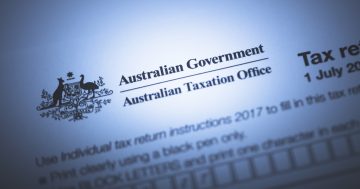
The Tax Ombudsman has severely criticised the ATO for how it writes and sends letters to taxpayers. Photo: Michelle Kroll.
Letters the Australian Taxation Office sends out to taxpayers are causing far too much unnecessary confusion, anxiety and stress, according to a high-level review of the ATO’s processes.
The Tax Ombudsman office has reprimanded the Tax Office after examining the way the ATO’s letters are designed, tested and distributed.
After reviewing a sample of some of the ATO’s most complex letters, as part of its review, Tax Ombudsman Ruth Owen said the ATO must improve the clarity and tone of its correspondence with taxpayers.
She has released a report of the review into the letters, which includes a number of recommendations for improvement.
“I think we’ve all received a letter from the ATO at some point and wondered what on earth it was about,” Ms Owen said.
“The ATO has a responsibility to engage with taxpayers in ways that make it easy to understand their obligations and any actions they need to take.
“The release of this review report is especially timely given we’re at the start of tax time, when people are particularly focused on communications with the ATO.”
The ATO sends more than 140 million letters and messages to Australians each year and invests considerable taxpayer-funded resources into developing and distributing them.
But the Tax Ombudsman’s review has shone a spotlight on the fact many people still find some of the ATO’s letters confusing and too technical, while the tone of the letters can also cause unnecessary stress and anxiety.
It has also highlighted how the ATO’s letters often lack empathy for the reader.
Ms Owen said the ATO’s letters she and her office reviewed varied in quality and clarity.
“The ATO focuses on what it wants to say, not what the taxpayer needs to know, without thinking about how the letter will be read or interpreted,” she said.
“The ATO assumes the reader has good technical tax knowledge, proficiency in English, and understands the terms they are using, which often is not the case.
“The ATO’s clear and direct language can sometimes seem threatening and imply guilt or assign blame to the reader.
“When they say, ‘you must act’ or ‘you didn’t report correctly,’ it can feel like they are accusing you of something rather than helping you get it right.”
The review also found that letters could better support culturally and linguistically diverse audiences, First Nations people and people with disability.
“Letters from the ATO must be written in ways that allow every reader to understand them, whatever their origin, background, education or circumstances,” Ms Owen said.
Another problematic issue for the ATO is that it doesn’t always send its letters to the right people.
The review found letters were not always going to the intended recipient and the Tax Ombudsman has chided the ATO, saying it could make a greater effort to ensure letters were sent to the right address.
“The ATO can definitely do more work with agents and taxpayers to help people understand what information needs to go where, so that the right communication reaches the right person at the right time,” Ms Owen said.
The Tax Ombudsman recommendations for improvements to the ATO’s letters include:
• reviewing how letters are designed and drafted, involving people with the right skills and knowledge to write clearly for their intended readers
• updating templates with standard information for diverse audiences
• structured and consistent testing of letters with a variety of taxpayers and tax professionals, to ensure they are fit for purpose, including devising ways to gather and implement feedback
• ensuring taxpayers’ and tax agents’ communication preferences are applied to all letter templates.
The Tax Ombudsman’s review of the ATO’s letters follows a recent capability review of the tax agency undertaken by the Australian Public Service Commission.
That review found the ATO needed to be more coordinated in its work.
The APSC found the ATO to be a high-performing agency but one that needed greater attention in getting the whole organisation working as “one ATO” and in streamlining internal governance and accountabilities.
Original Article published by Chris Johnson on Region Canberra.










